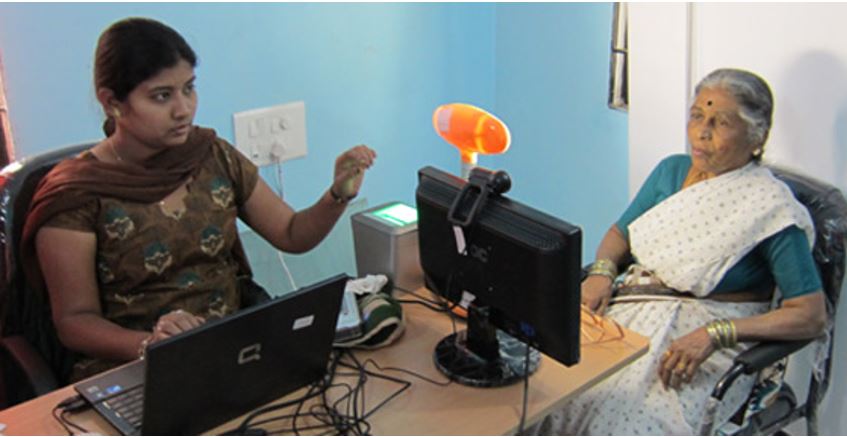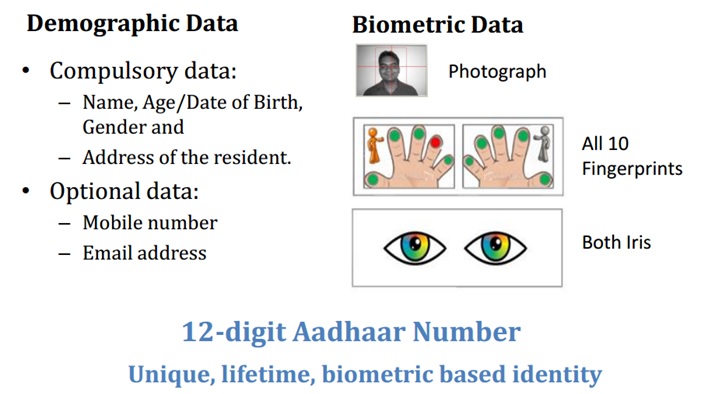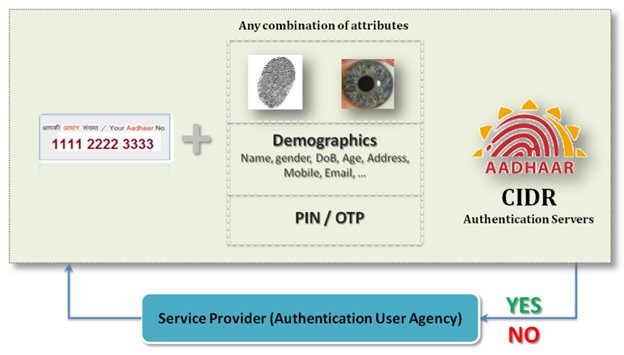HOW AADHAAR IS GIVING AN IDENTITY TO 1.3 BILLION CITIZENS?
July 31, 2017
By reading the title, all my Indian colleagues would almost instantaneous be able to anticipate what my blog is about. A few months back my wife went to buy a new mobile SIM card from a local store for our daughter. As per government requirements and the anticipating need for documents to verify her identity, she carried a few documents like passport etc along with her to prove her identity and address. She was amazed that the only thing she had to do was offer her left-hand thumb print on a fingerprint scanner device and that’s all. No forms to be filled, no questions asked. I had a similar experience when I went to the e-Registration office to register my apartment rental agreement. Again here, it turned out to be a 5-minute process as the time-consuming validation process now just took few seconds with my thumb/fingerprint scan.
Aadhaar, once seen as a distant dream and considered extremely challenging by global experts, is about giving each of the 1.28 billion Indians an identity of their own. It was officially launched in May 2010 and within 7 years it has now covered 1.16 billion (count as of writing this blog) Indians with almost 99% of the adult population. Capgemini was one of the elite organizations invited at the start of 2010 to participate in understanding the Aadhaar vision and I was one of the lucky one to be a part of that. The Vision document was well articulated and quite futuristic as well as thoroughly laid thought about the document, promising to give the magic solution to resolve some of the India governments challenge to manage the large population of a developing nation. The official vision statement read as “To empower residents of India with a unique identity and a digital platform to authenticate anytime, anywhere”.

Aadhaar explained
Today, Aadhaar is a reality and so is the ever growing catalog of use cases that were expected to be enabled after its successful establishment. To explain the basic structure of Aadhaar, it is a 12 digit unique identification (UID) number linked to the resident’s basic demographic stored as text and biometric information namely photograph, ten fingerprints and two iris scans, which are stored in a centralized database. They are using MapR technology to build the project’s biometric database (the largest in the world), which can verify a person’s identity within 200 milliseconds. Since the Aadhaar system launched seven years ago, the Aadhaar platform has grown in capability. The amount of biometric data that is collected per person is approximately 3-5MB. For the 1.16 billion Aadhaar numbers issued so far using the system, making it the largest biometric identity repository in the world with approx 30+ petabytes of data, resulting in an excess of 1000+ trillion biometric matches every day., which maps to a total of 10-15 petabytes of data.

Already the Indian government has started executing some of its flagship mass programs on this platform. Direct Benefit Transfer(DBT) is one such key initiative that has been successfully implemented thanks to Aadhaar. Prior to Aadhaar, subsidies like cheap cooking gas, rice, wheat and basic essentials were disbursed to the 67% poor of the country through public distribution systems like government owned shops. This mechanism was very infamous for its corrupt and fraudulent practices. So a cooking LPG gas cylinder with a market value of 900 INR used to be available for a subsidized 300 INR through these shops. Now using DBT the differential money of 600INR for 9 cylinders a year per family are directly transferred to beneficiaries bank account linked to his Aadhaar. The beneficiaries are identified based on Aadhaar and parallel initiative (Jan Dhan or “Public Accounts”) was launched to provide each Indian with a bank account. As per current estimates, the Indian government has already saved about 500 B INR (7.5 B USD) in the last 3 years just through DBT. And this is just the beginning.

Right to Privacy – A challenge
While it is proven beyond doubt about numerous benefit of being able to identify each citizen and provide better governance, there is another side to it. One key challenge here is adherence to the “Right to Privacy”. It all started when a bunch of petitions were launched in India’s Supreme Court in 2015 terming Aadhaar, which collects personal details and biometrics, a breach of Privacy. The petitioners argued that Aadhaar enrollment was the means to a “totalitarian state” and an open invitation for personal data leakage. At present the court hearing is on with high profile 9 judge bench and expected to deliver a verdict by August 27, will shape the Indian republic for decades to come. While a definite legal definition of ‘privacy’ is not available. Some legal experts tend to define privacy as a human right enjoyed by every human being by virtue of his or her existence. It depends on no instrument or charter. Privacy can also extend to other aspects, including bodily integrity, personal autonomy, informational self-determination, protection of state surveillance, dignity, confidentiality, compelled speech and freedom to dissent or move or think. In short, the right to privacy has to be determined on a case-by-case basis.
Can Aadhaar be enabled on blockchain?
Aadhaar, as it is implemented at present, is a centralized distributed database managed by Government of India, which exposes secure API’s to authorized organizations to use. Is blockchain the right technology for Aadhaar? There has been a debate, analysis been done with the Aadhaar official forum on same. My own view tends to agree with Noelle Acheson, author of a recent blog on fintechblue.com. If the verification of the data needs to be centralized, and if transparency is not a fundamental feature, then a distributed database could suffice.
With Aadhaar platform and its service already maturing and its use across government departments, banks, financial institutions gathering pace, it gives a whole lot push and enables India to leap ahead by at least a couple of years towards the end vision of digital India. Being the second largest population on earth and the largest democracy, this provides a huge case study for others nations to adopt and improve on from its learning’s.
Reference: https://uidai.gov.in/

 English | EN
English | EN 